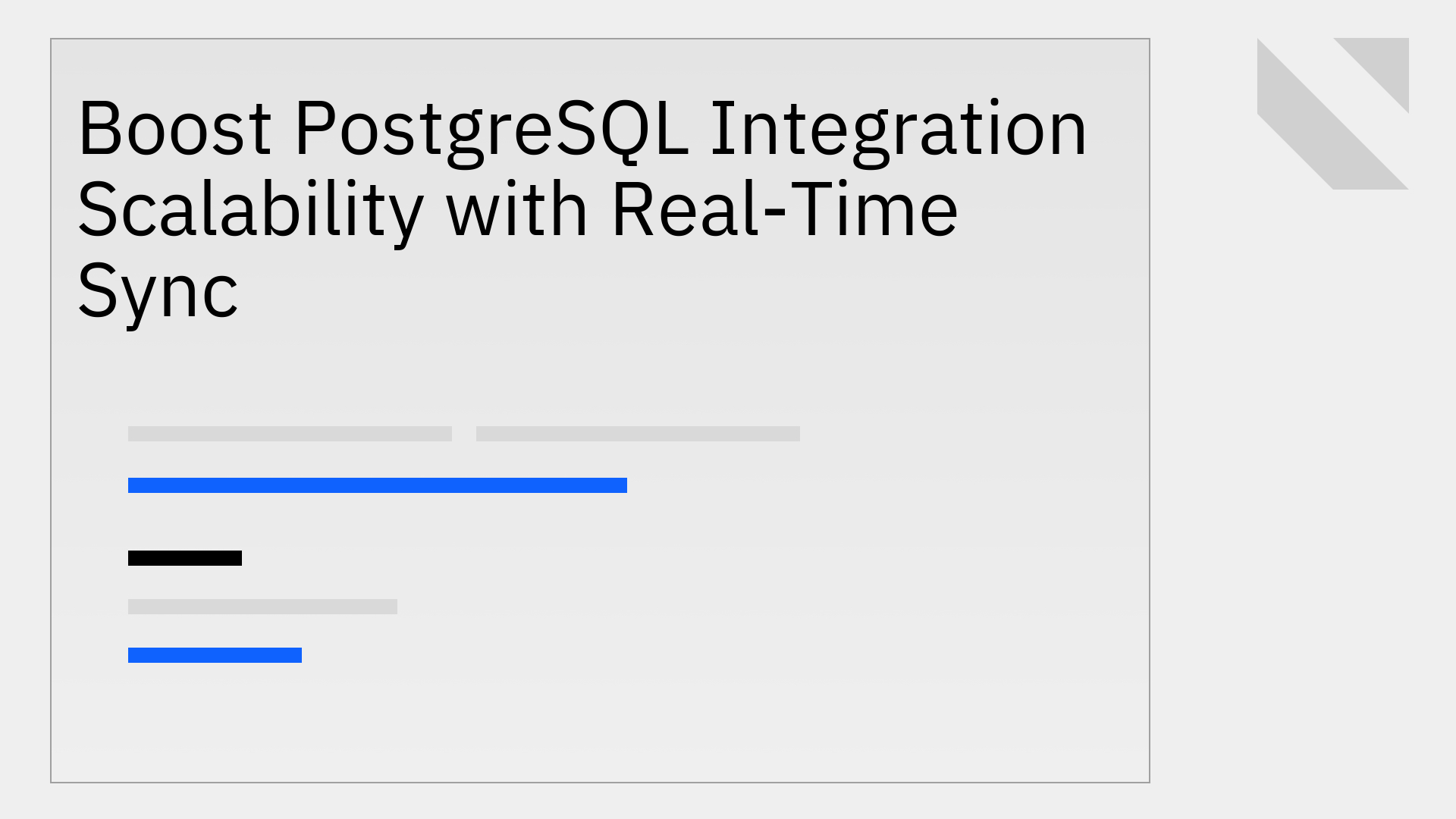
PostgreSQL is a powerhouse in the world of open-source relational databases, prized for its robustness, flexibility, and strict standards compliance.
As applications built on PostgreSQL mature and data volumes explode, however, a critical challenge emerges: scaling the integrations that connect this database to the wider application ecosystem. Businesses increasingly face data bottlenecks, high latency, and significant operational inefficiencies caused by outdated data. This article explores how real-time synchronization provides a modern, effective solution to achieve true postgresql integration scalability.
When trying to scale data integrations connected to a PostgreSQL database, organizations frequently encounter several critical pain points that undermine application performance and business operations.
SELECT * FROM... queries to check for changes. This approach consumes a significant percentage of CPU and memory, placing a heavy load on the database that can slow down core application performance for all users.While conventional database scaling strategies can boost raw performance, they often fail to solve and can even exacerbate the specific challenges related to integration scalability.
Vertical scaling, or scaling up, involves increasing the resources (CPU, RAM, storage) of a single database server. Although it is a straightforward first step, this method has clear limitations. It is expensive, hits physical hardware limits, and creates a single point of failure that puts the entire system at risk. More importantly, it doesn't fix the inefficiency of polling-based integrations; it simply provides more horsepower for those inefficient queries to consume, delaying the inevitable performance bottleneck [1].
Horizontal scaling, or scaling out, distributes the database load across multiple servers using techniques like read replicas or sharding. While effective for improving read throughput, this approach introduces immense complexity for integrations. Maintaining data consistency for writes across a distributed architecture is a significant challenge, and the operational overhead required to manage it is substantial. Simple integration tasks become difficult when data is fragmented across multiple nodes [2].
The superior solution for scalable PostgreSQL integrations is real-time synchronization powered by Change Data Capture (CDC). This modern approach fundamentally redesigns how data moves between systems, directly addressing the root cause of integration bottlenecks.
Change Data Capture is a design pattern that identifies and captures row-level changes (INSERT, UPDATE, DELETE) in a database in real time. For PostgreSQL, this is accomplished by reading from the database's Write-Ahead Log (WAL)—the same transaction log used for recovery and replication. This method is highly efficient and has a minimal impact on database performance because it avoids running resource-intensive queries against your production tables. It is a stark contrast to the heavy load imposed by constant polling. You can explore this topic in-depth in our Postgres Change Data Capture showdown.
Adopting a real-time, CDC-based approach for PostgreSQL integration offers several transformative benefits for scalability and operational efficiency:
While the concept of CDC is powerful, building and maintaining a production-grade pipeline from scratch is complex. Stacksync provides a managed, enterprise-ready platform that dramatically simplifies and accelerates the adoption of real-time PostgreSQL synchronization.
Stacksync removes the high technical barrier to entry for CDC. With our platform, users are not required to manually configure replication slots, manage logical decoding plugins, or deploy and operate complex open-source tools. We provide a no-code setup that enables teams to capture every Postgres change without coding, freeing up valuable engineering resources. Stacksync leverages PostgreSQL's native logical replication, a process detailed in our PostgreSQL connector documentation, to ensure maximum efficiency and reliability.
A critical element of modern operational workflows is the ability for data to flow in both directions. Stacksync delivers genuine two-way synchronization, which is essential for creating seamless, automated business processes. For example, a new lead created in your CRM can be instantly written as a user record in PostgreSQL, and any subsequent update to that user's status in the database can be reflected back in the CRM in real time. Learn more about our powerful PostgreSQL two-way sync integration and its capabilities.
Stacksync is architected from the ground up with enterprise-grade features that ensure your integrations can scale reliably as your business grows.
Traditional batch processing and polling-based integration methods are no longer sufficient for the scalability and real-time demands of modern business applications. Real-time synchronization using Change Data Capture has emerged as the definitive solution for achieving PostgreSQL integration scalability, offering a low-latency, low-impact, and highly reliable method for keeping data consistent across your technology stack.
By leveraging a managed platform like Stacksync, you can implement real-time, two-way sync for PostgreSQL without the complexity, cost, and maintenance overhead of a DIY approach. Future-proof your data architecture and empower your teams with the speed and reliability of a truly modern integration strategy.
Ready to see how real-time sync can transform your PostgreSQL integrations? Book a demo with one of our data experts or start your 14-day free trial today.